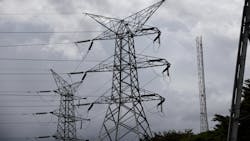FERC Modernizes PURPA Rules to Ensure Compliance, Reflect Market Changes
The Federal Energy Regulatory Commission (FERC) recently revised its regulations governing qualifying small power producers and cogenerators under the Public Utility Regulatory Policies Act of 1978 (PURPA) to address the significant changes that have taken place in the nation's energy markets since those rules first took effect.
The Congress enacted PURPA to encourage development of small power producers and cogenerators, called qualifying facilities (QFs), and to reduce demand for traditional fossil fuels that were considered to be in short supply. The FERC's regulations were enacted in 1980 and, with limited changes over the ensuing years, remain in effect today.
"I am extremely pleased that we are issuing the final rule to modernize the commission's implementation of PURPA," said Neil Chatterjee, FERC chairman. "While PURPA laid the foundation for the competitive wholesale power markets that we have today, the energy landscape in this country has changed drastically since the commission implemented these regulations four decades ago."
The final rule grants additional flexibility to state regulatory authorities in establishing avoided cost rates for QF sales inside and outside of the organized electric markets. It also grants states the ability to require energy rates (but not capacity rates) to vary during the life of a QF contract.
"It's been my view from the start that the FERC should modernize our regulations in ways that not only meet our statutory obligations, but also protect consumers and preserve competition," said Chatterjee. "The recent rule accomplishes those goals. We will continue to encourage QF development while addressing concerns about how PURPA works in today's electric markets."
The FERC also modified the 'one-mile rule' and reduced the rebuttable presumption for nondiscriminatory access to power markets — from 20 MW to 5 MW — for small power production, but not cogeneration, facilities. In order for a QF to establish a legally enforceable obligation, the final rule requires that the QFs must demonstrate commercial viability and financial commitment to build under objective and reasonable state-determined criteria.
The final rule does not change other elements to the commission's existing PURPA regulations that encourage QF development, including those requiring electric utilities to provide backup electric energy to QFs on a nondiscriminatory basis and at just and reasonable rates; requiring electric utilities to interconnect with QFs; and providing exemptions to QFs from many provisions of the Federal Power Act and state laws governing utility rates and financial organization.
The rule takes effect 120 days after publication in the Federal Register.
